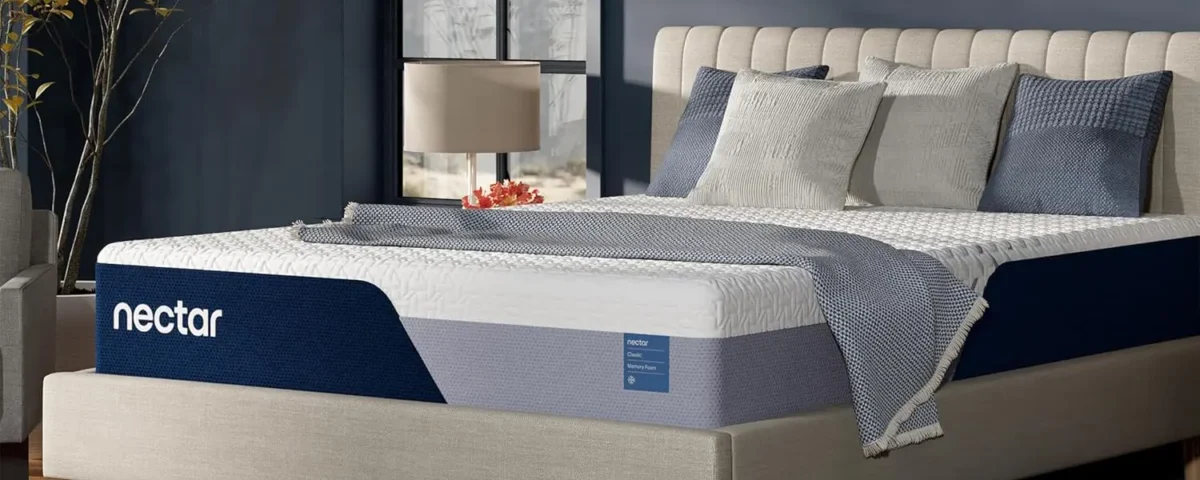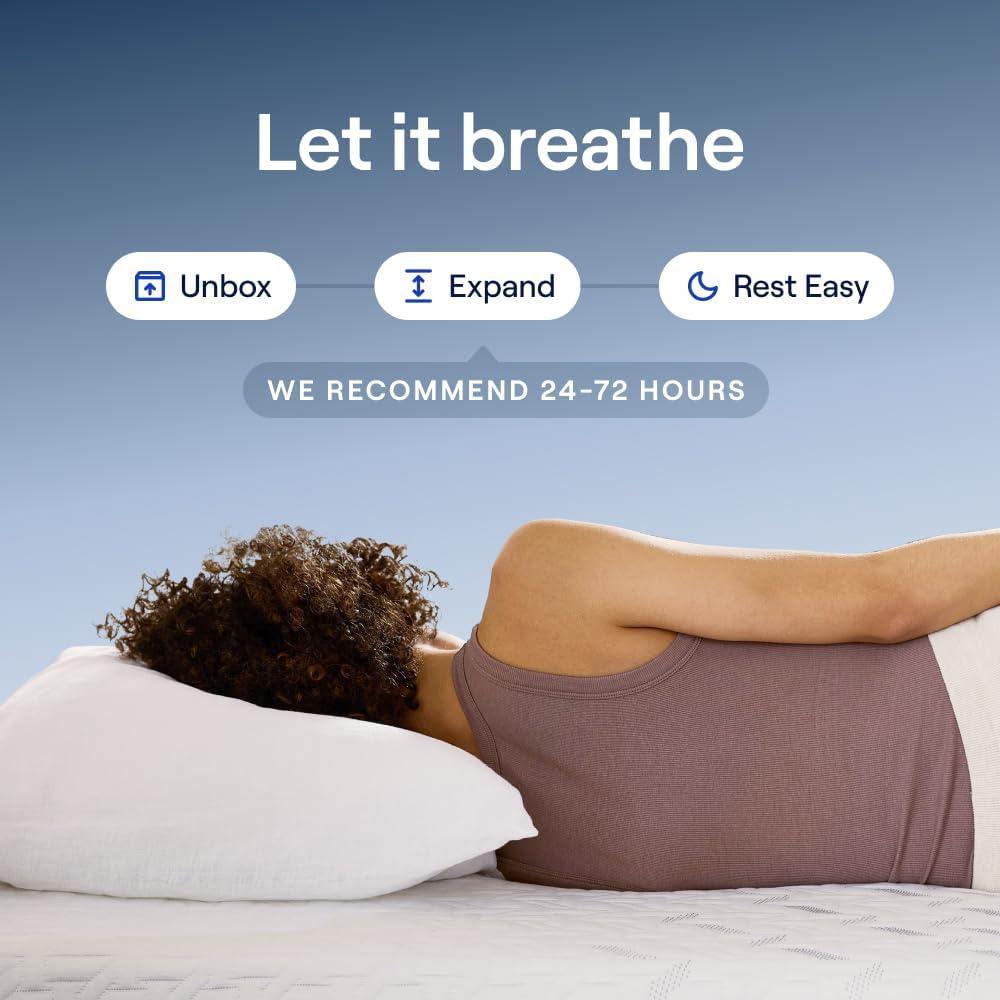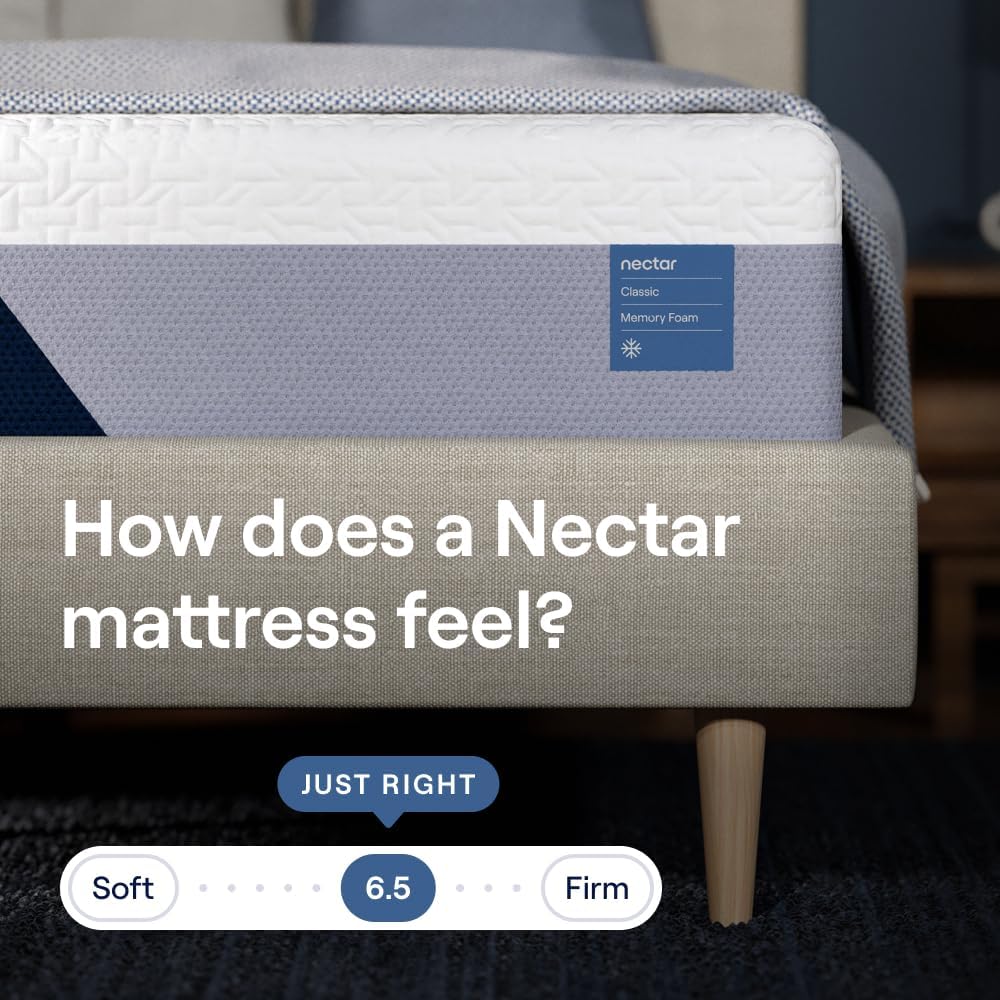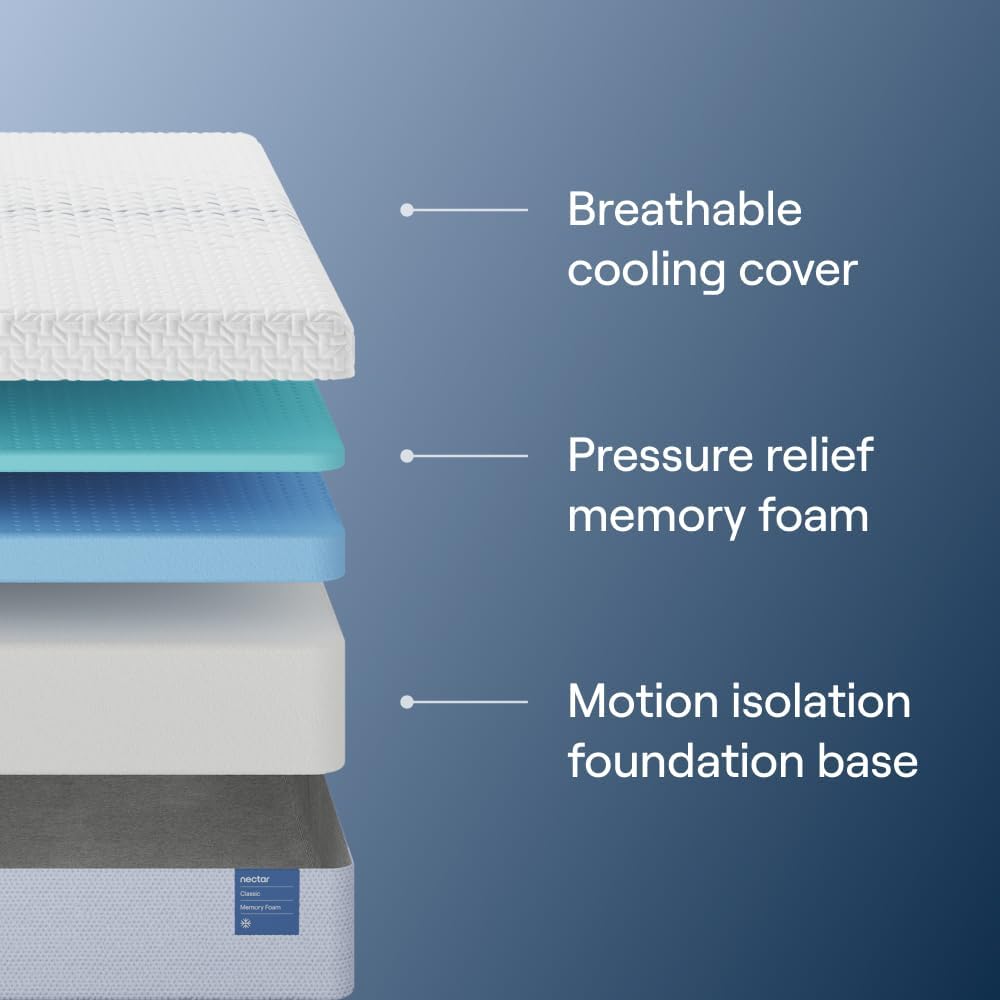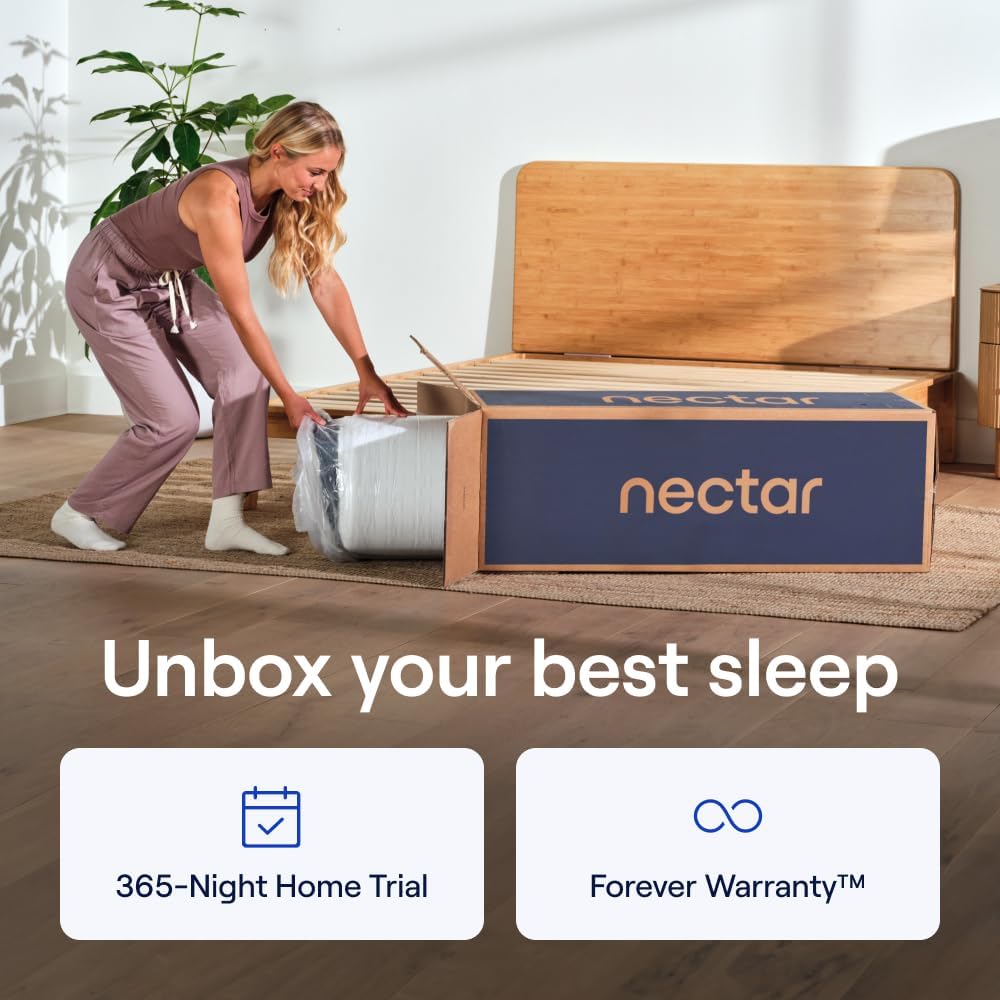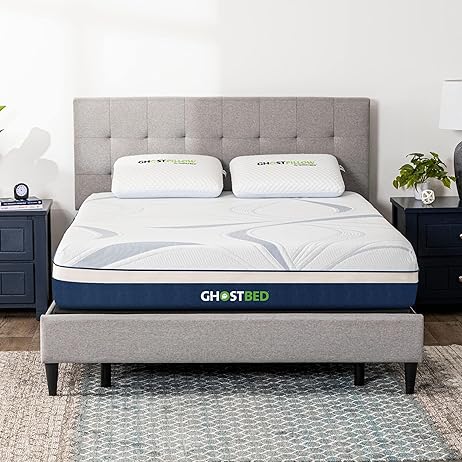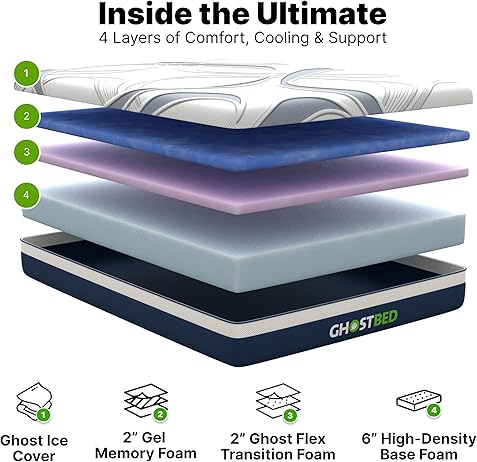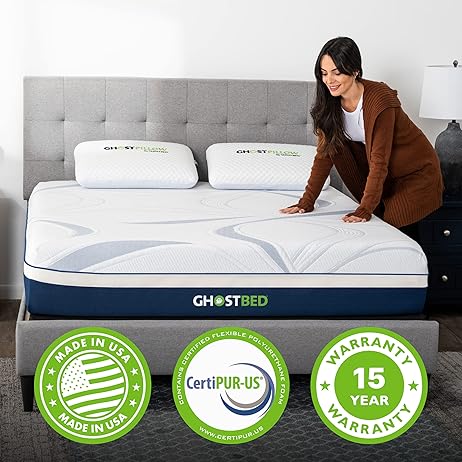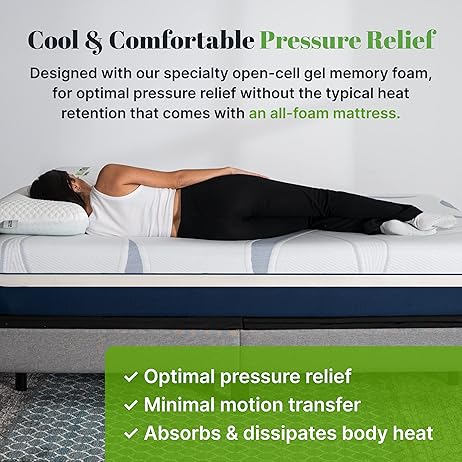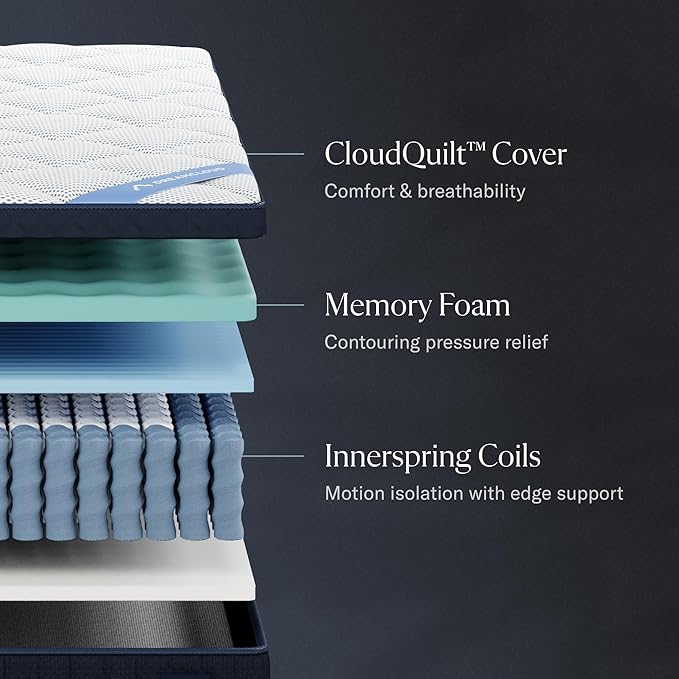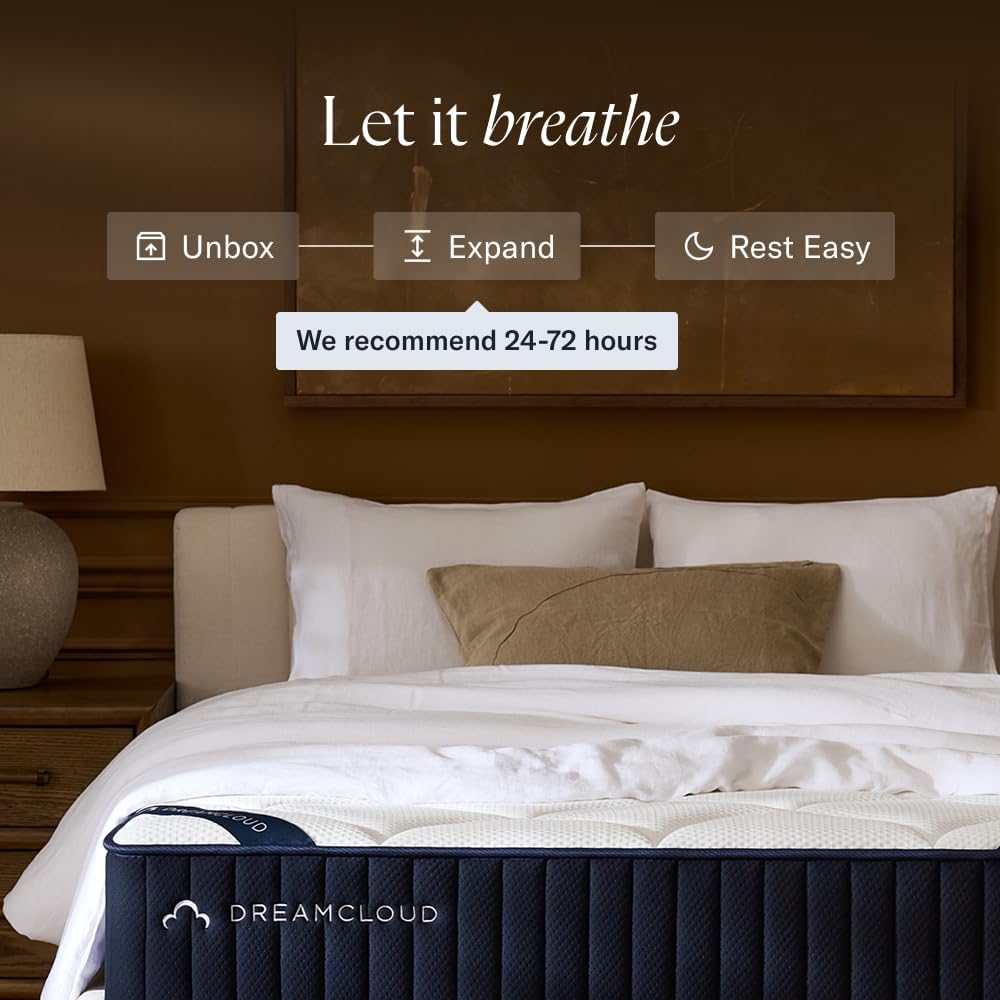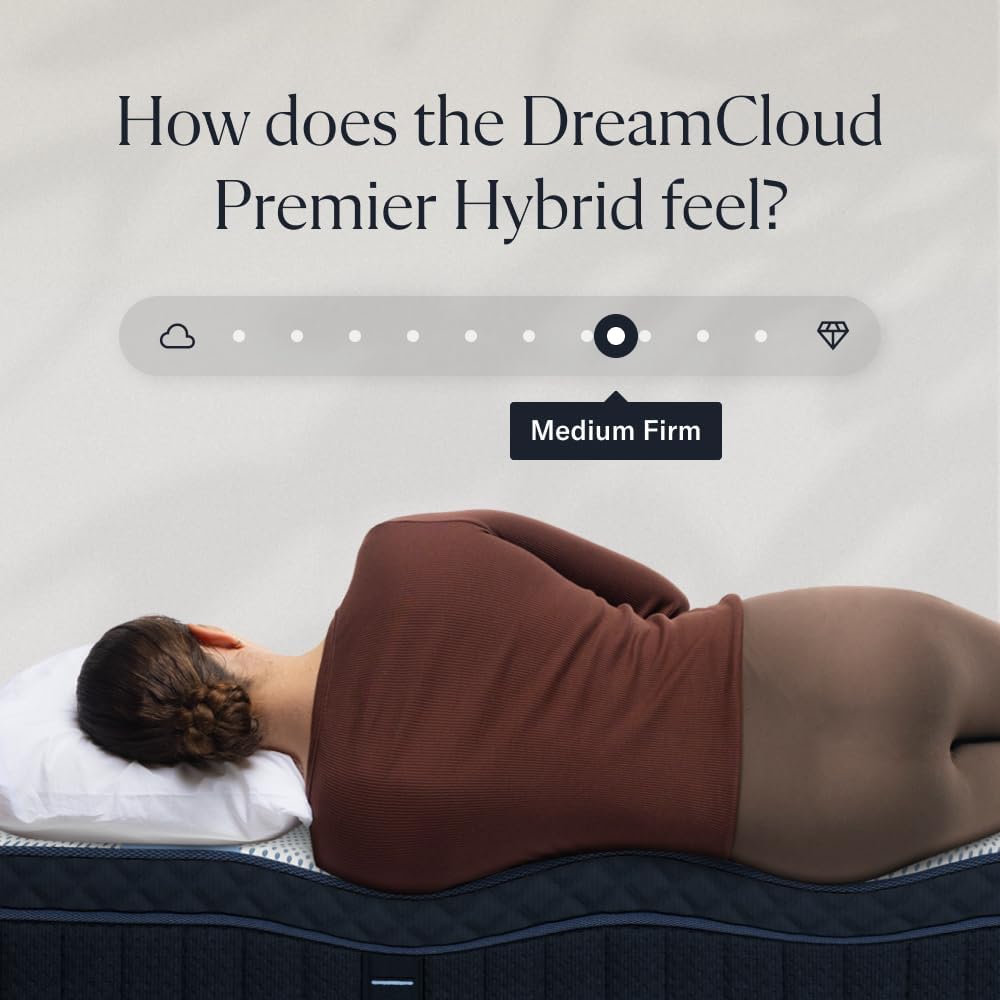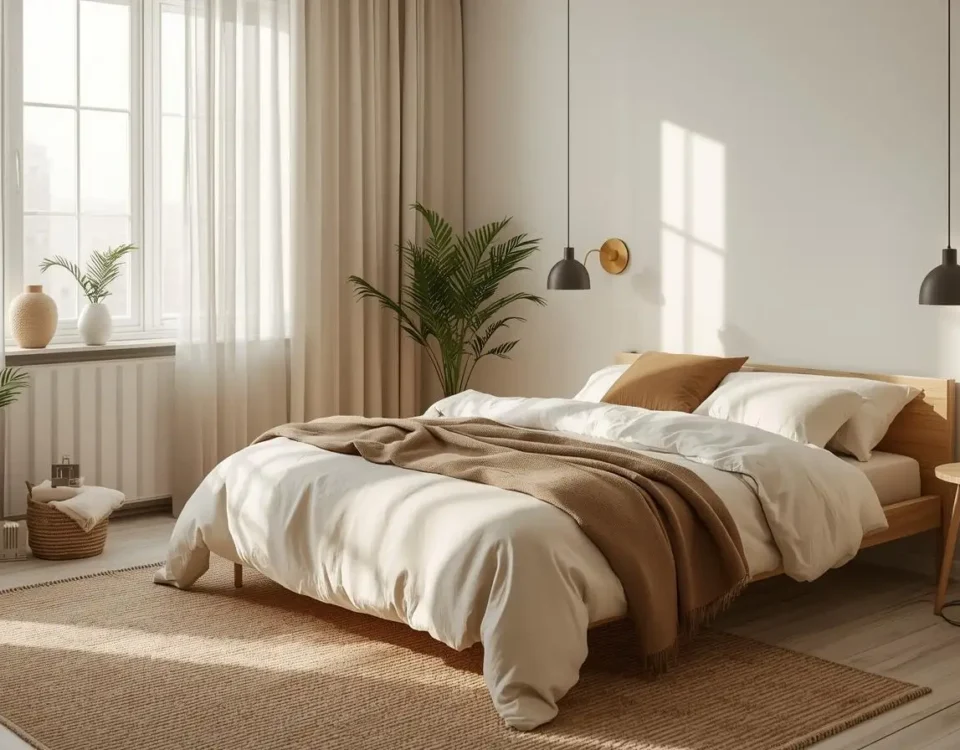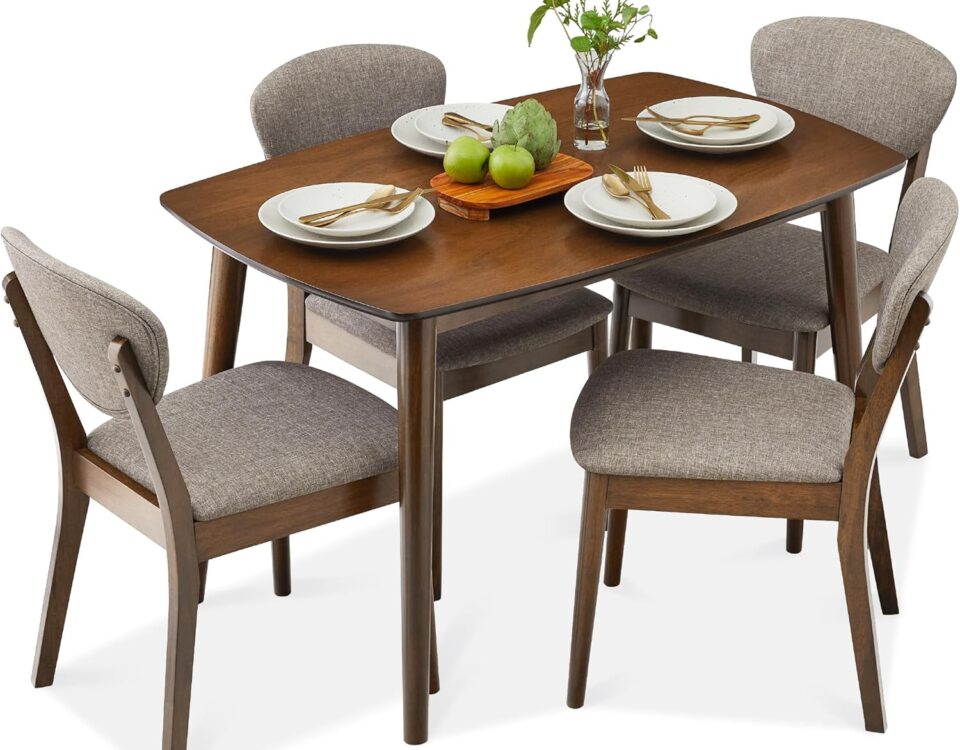
Organic Modern Living Room The Definitive Guide to Serenity & Style
September 11, 2025
Top US Furniture Brands for Quality, Style & Value in 2025
September 16, 2025Are restless nights and morning aches a constant companion? You’re not alone. For many, the journey to better sleep is filled with frustration, confusion, and countless hours of tossing and turning. Often, the culprit lies beneath you your mattress. In a market flooded with choices, from firm to plush, memory foam to innerspring, selecting the right one can feel more like navigating a maze than finding comfort.
You might be wondering: What really sets memory foam apart from an innerspring or hybrid mattress? Which option actually helps relieve back pain or stays cool through the night? And if you sleep with a partner, how do you avoid being woken every time they move? These aren’t just marketing buzzwords they’re real concerns. And in this guide, we’ll break it all down in plain, simple terms, so you can make a decision that’s right for your body and your sleep style.
By the time you finish this guide, you’ll have a clear understanding of the key types of mattresses available, what benefits they offer, and how to match one to your specific sleep needs. Whether you're seeking pain relief, better support, or just a peaceful night’s rest, this guide will empower you to make a choice that leads to truly restorative sleep night after night.
The Core Mattress Types Explained: A Deep Dive
When it comes to selecting the right mattress, understanding the key types is essential. Each mattress construction offers distinct advantages and potential drawbacks depending on your sleep style, body type, and comfort preferences. Let’s explore the core mattress types in detail to help you make a truly informed decision.
Memory Foam Mattresses: The Contouring Embrace
Core Construction & Materials
Memory foam mattresses are constructed using multiple layers of viscoelastic polyurethane foam. These layers vary in density and purpose:
- Support Core (High-Density Foam): Forms the foundation, providing structural integrity and long-term durability.
- Transition Layer (Medium-Density Foam): Acts as a buffer between the dense core and the plush top, offering gradual support.
- Comfort Layer (Low-Density or Infused Foam): Provides the soft, contouring feel that memory foam is known for.
Foam Density Matters:
- High-density foam (5+ lbs/ft³) = better support and longevity.
- Medium-density foam (3–5 lbs/ft³) = balanced contour and responsiveness.
- Low-density foam (<3 lbs/ft³) = plush comfort, but less durability.
Cooling Innovations: Traditional memory foam traps heat, but manufacturers now combat this with:
- Open-cell structures (better airflow),
- Gel infusions (pull heat away from the body),
- Copper/graphite particles (enhanced thermal conductivity).
General Feel & Characteristics
- Deep, slow-response contouring.
- Cradles the body to relieve pressure at hips and shoulders.
- Exceptional motion isolation ideal for couples.
- Often perceived as "sleeping hot" (though newer models address this).
Can feel firmer in cooler rooms due to temperature-sensitive material.
- Outstanding pressure relief.
- Minimal motion transfer (great for light sleepers).
- Convenient, rapid access to technology
- Long-lasting support (especially high-density models).
- Heat retention (though modern models improve airflow).
- “Stuck” feeling slower recovery can make repositioning harder.
- Chemical smell at first (off-gassing).
- May feel too firm when cold.
Real-World Feedback:
“While I love how it hugs my hips, I sometimes struggle to change positions it feels like quicksand,” reports one user. Others mention needing a fan or cooler room for optimal comfort.
Product Recommendations

Nectar Classic Best for Pressure Relief & Motion Isolation
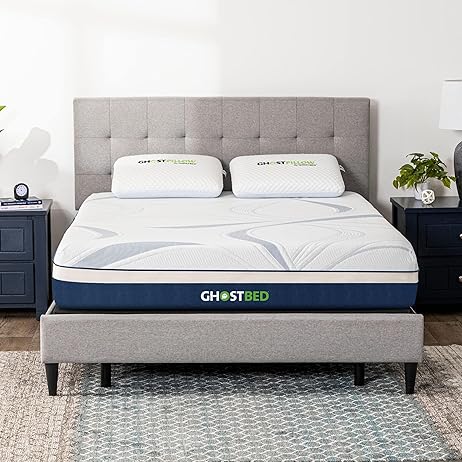
GhostBed Best for Hot Sleepers
Expert Tip:
New memory foam mattresses may emit a temporary chemical odor this is called off-gassing. Unbox in a well-ventilated room and allow 24–72 hours to fully air out.
Innerspring Mattresses: The Classic Bounce
Core Construction & Materials
Innerspring mattresses feature a coil-based support system topped with basic padding or pillow-top layers.
Types of Coils:
- Bonnell Coils: Hourglass-shaped, budget-friendly, less durable.
- Offset Coils: Hinged design for better contouring and durability.
- Continuous Coils: Made from a single wire; very durable but less responsive.
- Pocketed Coils: Individually wrapped coils that move independently, reducing motion transfer.
Coil Gauge: Thicker wire (lower number, e.g., 12) = firmer mattress.
Higher gauge (e.g., 15) = softer feel.
Coil Count: Generally, a higher count = better support, but material quality matters more than raw number.
Comfort Layers: Typically thin layers of polyfoam, cotton, or wool above the coils.
General Feel & Characteristics
- Classic bounce and fast response.
- Sleeps cooler due to excellent airflow between coils.
- Strong edge support (especially double-reinforced edges).
Prone to motion transfer in traditional coil designs.
Pros & Cons of Innerspring
- Excellent breathability (cool sleeping).
- Affordable and widely available.
- Good responsiveness and edge support.
- Variety of firmness options.
- Less effective at pressure relief than foam or hybrid.
- Motion transfer (partner movement can be disruptive).
- Potential for creaking or squeaking over time.
- Shorter lifespan in low-end models.
Real-World Feedback:
“I love the bounce, but after a year, I started feeling dips where I sleep,” one user noted. Others mention noise becoming an issue in older models.
Product Recommendation
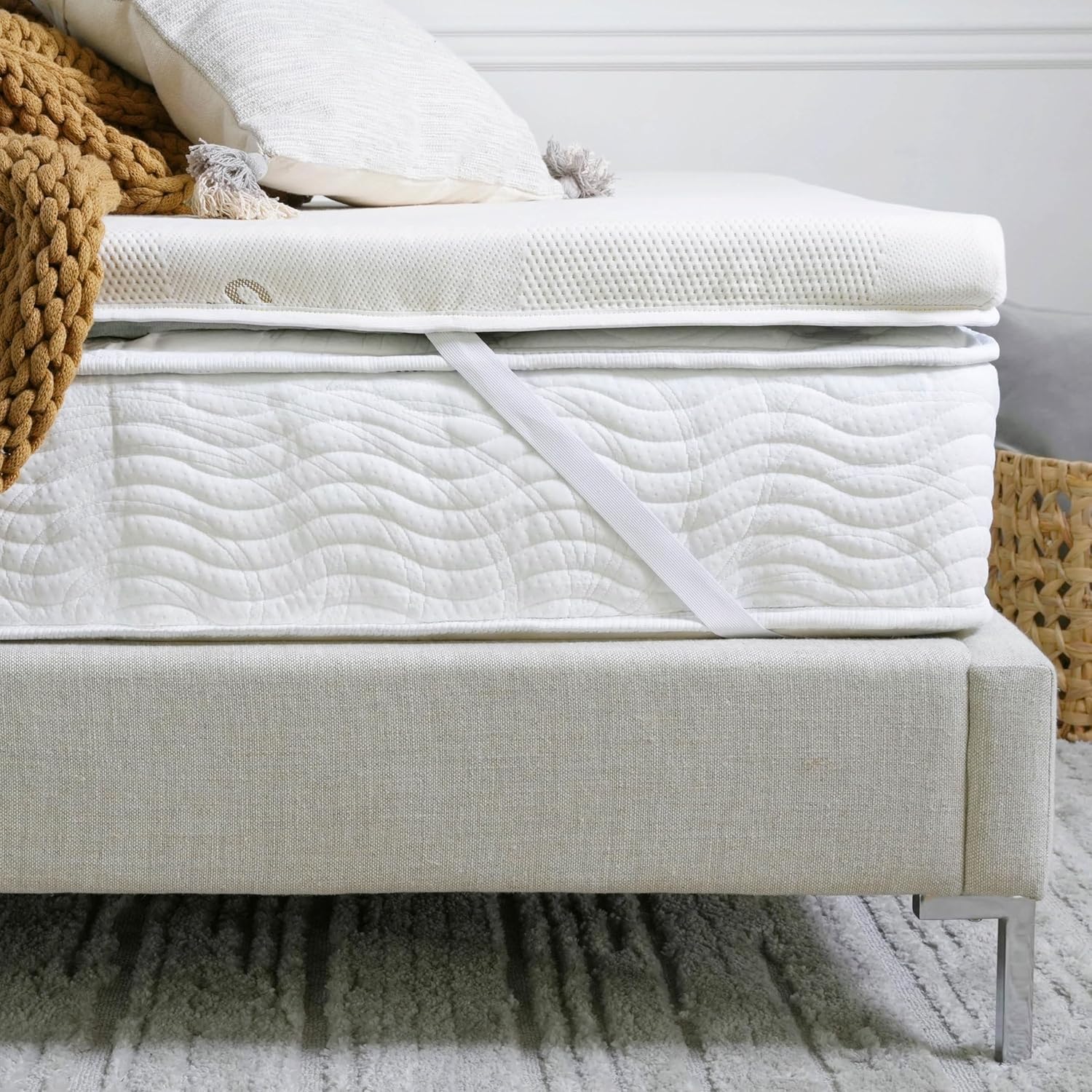
Classic Support & Bounce Saatva Graphite Memory Foam
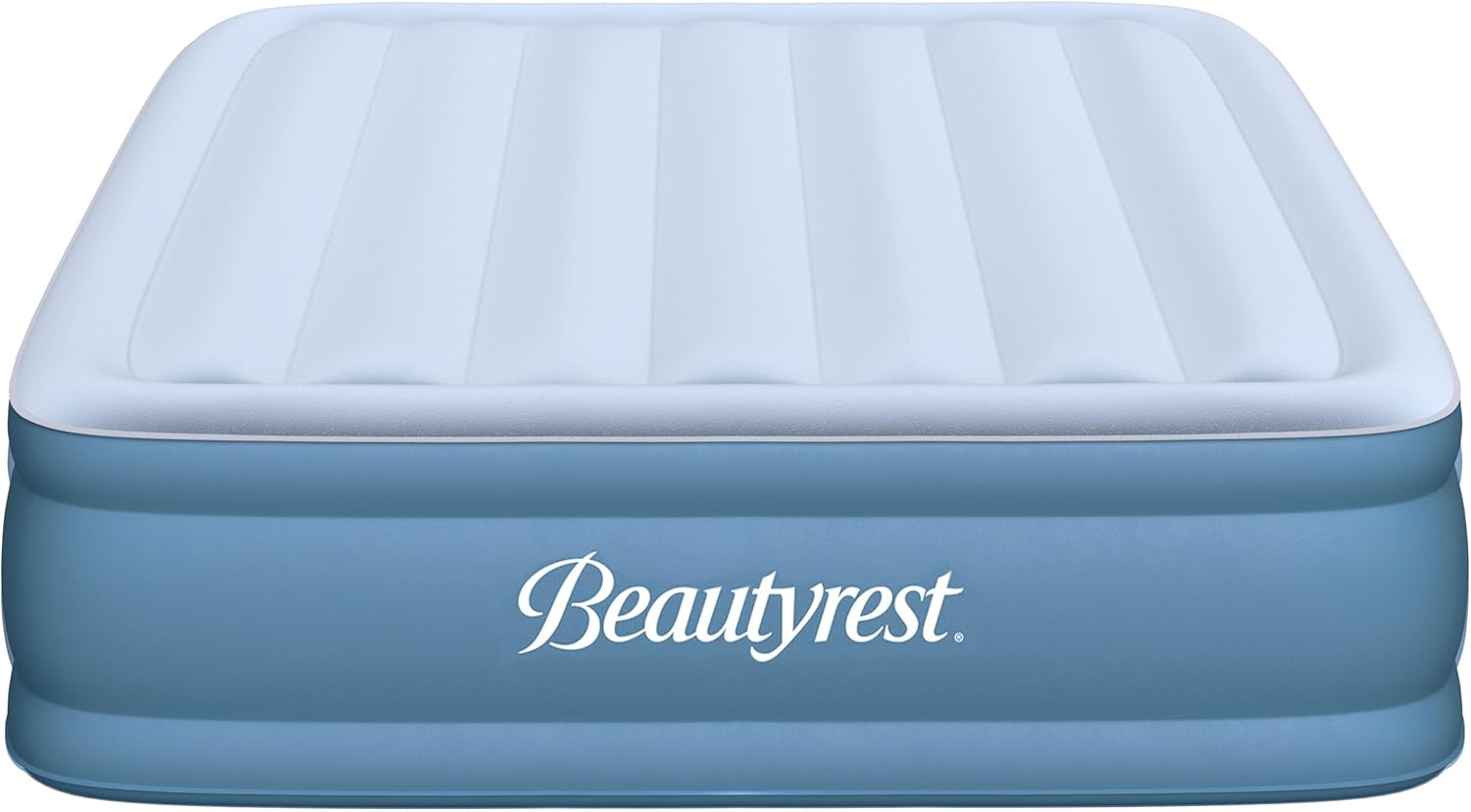
Beautyrest Sensa Rest Air Bed
Hybrid Mattresses: The Best of Both Worlds
Core Construction & Materials
Hybrid mattresses blend foam comfort layers with a pocketed coil support core, offering a balanced sleep experience.
Typical Layers:
- Support Core: Pocketed coils, often zoned for targeted support (firmer under hips, softer under shoulders).
- Comfort Layers: Memory foam, latex, or polyfoam (sometimes multiple layers stacked for added performance).
- Top Cover: Quilted, cooling fabrics or phase-change materials for temperature regulation.
Pocketed Coils: Move independently to reduce motion transfer and contour to the body more precisely.
Strategic Layering: Foam adds comfort and contouring; coils ensure bounce, breathability, and support.
General Feel & Characteristics
- Balanced mix of sink and bounce.
- More breathable than all-foam models.
- Excellent motion control (especially high-end hybrids).
- Strong support, often zoned for spinal alignment.
- Typically heavier and thicker than foam or innerspring models.
Pros & Cons of Hybrid
- Great mix of pressure relief and responsiveness.
- Sleeps cooler than memory foam.
- Durable construction.
- Good edge support and reduced motion transfer.
- Often heavier and harder to move.
- More expensive than basic innersprings or foam.
- Minor motion transfer may still occur in lower-end models.
Real-World Feedback:
“It gives me the cushion I need, but still feels supportive,” one reviewer shared. Another mentioned slight creaking sounds emerging after two years though rare, it’s worth noting.
Product Recommendations
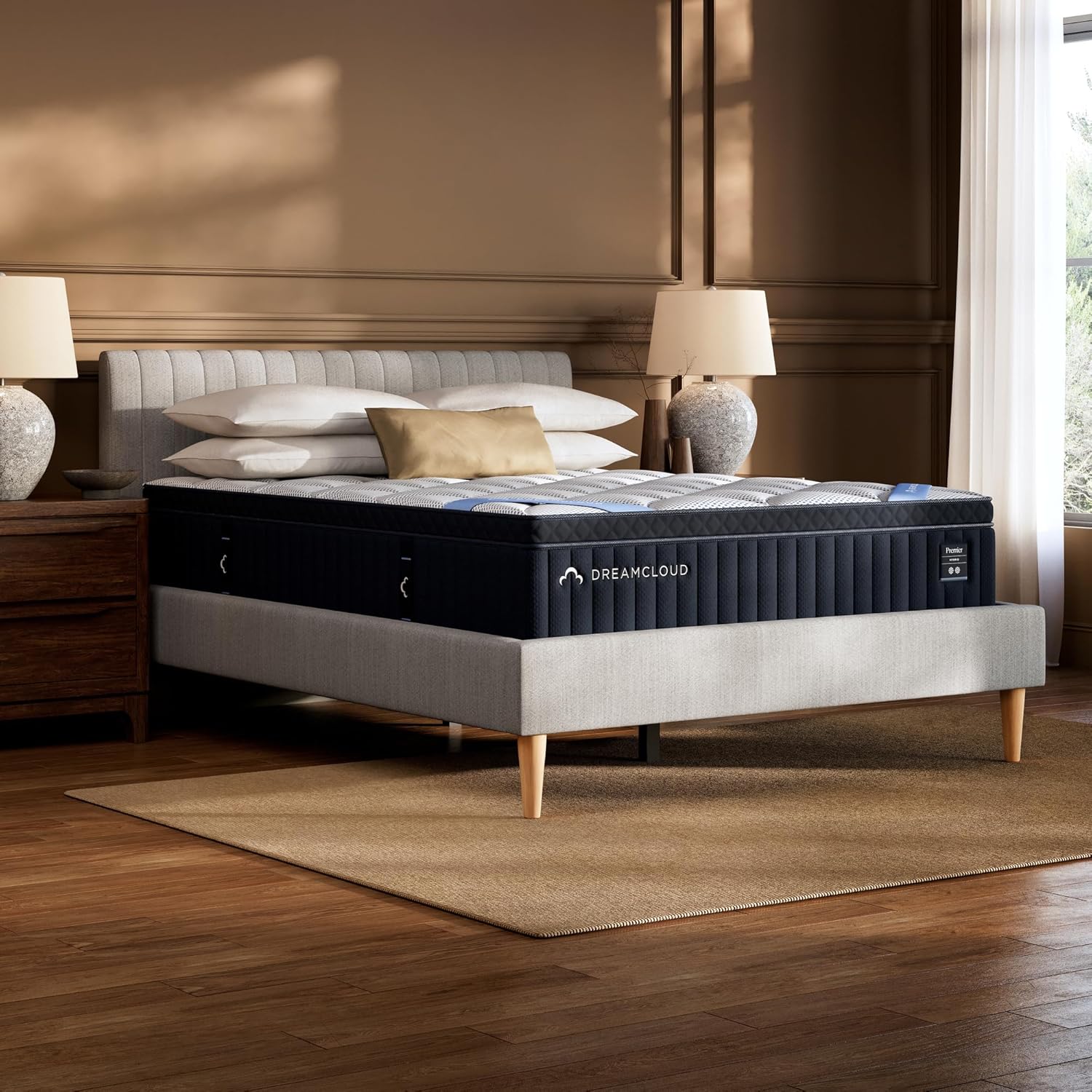
Well-Balanced Hybrid DreamCloud Premier

Linenspa 10 Inch Memory Foam and Spring Hybrid Mattress
Comparing Your Options: Pros, Cons, and Key Differences
Choosing the right mattress isn't just about comfort it's about understanding what each type offers in terms of support, temperature control, durability, and more. The following table offers a quick, side-by-side look at how memory foam, innerspring, and hybrid mattresses stack up across the most important features.
Mattress Type Comparison Table
|
Feature |
Memory Foam |
Innerspring |
Hybrid |
|
Primary Support |
High-density foam layers |
Steel coils (Bonnell, Pocketed, etc.) |
Pocketed coils + foam/latex layers |
|
Feel |
Contouring, “sinking in,” body-hug |
Bouncy, responsive, firm |
Balanced (contour + bounce) |
|
Pressure Relief |
Excellent |
Moderate (can be enhanced with pillowtop) |
Excellent |
|
Motion Isolation |
Excellent |
Poor to Moderate (better with pocketed coils) |
Very Good |
|
Temperature |
Can sleep hot (innovations help) |
Tends to sleep cool |
Good (coils allow airflow) |
|
Edge Support |
Varies by design, can be weak |
Often very good (especially traditional) |
Good to Excellent (reinforced edges) |
|
Noise Potential |
Very Low |
Can become noisy (squeaking) |
Low (pocketed coils minimize noise) |
|
Lifespan (Avg.) |
8–10+ years |
5–7 years (traditional), 7–10 years (pocketed) |
7–10+ years |
|
Price Point |
Mid-range to High-end |
Low to Mid-range |
Mid-range to Luxury |
Disclaimer: These characteristics reflect general industry trends. Actual performance can vary based on brand, material quality, and construction methods. Always refer to individual product specifications and customer reviews before making a purchase.
Key Differences Summarized: Beyond the Table
While the chart above provides a great overview, let’s explore some deeper differentiators that can influence your final decision:
Responsiveness & Bounce
- Memory Foam: Slow to respond, designed for deep contouring. This can feel like a “slow sink,” which some love and others dislike.
- Innerspring: Highly responsive with a classic bounce, making repositioning easy and familiar.
- Hybrid: Offers a balanced feel the contouring of foam without losing the bounce of coils.
Best for Active Sleepers: Innerspring and hybrid models are ideal for those who move frequently during the night.
Conformity vs. Support
- Memory Foam: Exceptional conformity molds closely to the body for targeted pressure relief.
- Innerspring: Less conforming; relies on general support from coils. May not relieve pressure at joints as well.
- Hybrid: Strikes a balance by providing zoned support through pocketed coils and pressure relief through comfort layers.
Spinal Alignment: Hybrids and high-quality memory foam models often incorporate zoned layers for better spinal alignment.
Weight & Mobility
- Memory Foam: Typically heavier and harder to move or rotate, especially in king or queen sizes.
- Innerspring: Lighter and easier to transport or flip, especially in basic models.
- Hybrid: Heaviest overall due to combined materials. May require two people to move.
Practical Tip: If you plan to move frequently or live alone, a lighter innerspring mattress may be more manageable.
Off-Gassing & Material Sourcing
- Memory Foam: Commonly has initial off-gassing a chemical smell caused by volatile organic compounds (VOCs). This usually fades within a few days.
- Innerspring: Minimal off-gassing. Most materials (coils, cotton, wool) are less chemically treated.
- Hybrid: Off-gassing potential depends on the foam used. High-end hybrids often use CertiPUR-US certified foams to reduce chemical emissions.
Eco-Conscious Comfort: Sustainability & Certifications
Sustainability is increasingly important to many consumers. Here’s how each mattress type measures up:
- Memory Foam: Traditionally made from petrochemicals. However, more brands now use CertiPUR-US® certified foams, which are made without ozone depleters, heavy metals, or harmful flame retardants. Still, they are not biodegradable.
- Innerspring: Generally considered more eco-friendly. Steel coils are recyclable, and many models use organic or natural padding materials like cotton or wool. Look for OEKO-TEX or GOTS-certified fabrics for an eco-conscious choice.
- Hybrid: Varies by model. Some use natural latex (a renewable resource) in their comfort layers. Others combine recycled steel coils and eco-friendly foams. GREENGUARD Gold and eco-INSTITUT certifications can indicate safer material use.
Eco Tip: Brands like Avocado and Birch offer mattresses made with natural latex, organic cotton, and sustainably sourced wool great picks for environmentally conscious shoppers.
Finding Your Perfect Match: Who Each Mattress Type Suits Best
There’s no single “best mattress” for everyone your ideal match depends on your body, your sleep style, your health concerns, and even your bedroom temperature. This section helps you pinpoint the type of mattress that suits your unique needs using a simplified Sleep Profile Matcher, followed by tailored guidance based on position, body type, pain points, and more.
Interactive ‘Sleep Profile Matcher’ (Simplified Text Guide)
Use this quick-reference flow to find a mattress type based on your preferences:
Start Here:
- 👉 Do you prioritize deep pressure relief and minimal motion transfer? ➤ Go to A
- 👉 Do you prefer a bouncy, responsive feel and good airflow? ➤ Go to B
- 👉 Do you want a balanced feel with both contouring and support, plus temperature control? ➤ Go to C
🅐 (For Deep Pressure Relief)
- Do you sleep hot? ➤ Consider a cooling gel-infused memory foam.
- On a tight budget but need contouring? ➤ Explore standard memory foam models.
✅ Recommendation: Memory Foam is likely your best fit. It excels at relieving pressure points and isolating motion. For hot sleepers, opt for models with gel, open-cell structures, or cooling covers.
🅑 (For Bouncy & Responsive Feel)
- Do you share your bed and want less disturbance? ➤ Consider a pocketed coil innerspring.
- On a strict budget and prefer a traditional feel? ➤ Explore Bonnell coil innersprings.
✅ Recommendation: Innerspring mattresses are your match. They provide a responsive, airy feel with strong edge support. Choose pocketed coils if motion isolation matters.
🅒 (For a Balanced Feel)
- Do you have back or joint pain? ➤ Look for hybrids with zoned lumbar support.
- Are you a combination sleeper? ➤ Hybrids offer versatility in movement and pressure relief.
✅ Recommendation: Hybrid mattresses blend contouring comfort and coil support. Ideal if you want the best of both worlds.
Matching Mattress to Sleep Position
Different sleep positions require specific support levels to promote proper spinal alignment and reduce discomfort.
Side Sleepers
- Need: Soft to medium-soft mattresses that cushion the shoulders and hips.
- Why: Allows these pressure points to sink slightly, keeping the spine aligned horizontally.
- ✅ Best Types: Memory foam or plush hybrids.
E-E-A-T Insight: According to the Sleep Foundation, side sleepers benefit from pressure-relieving materials that prevent misalignment of the spine and reduce joint discomfort.
Back Sleepers
- Need: Medium-firm support to maintain lumbar curvature.
- Why: Prevents hips from sinking too low while keeping the shoulders and spine supported.
- ✅ Best Types: Medium-firm memory foam or balanced hybrids with lumbar support.
Stomach Sleepers
- Need: Firm mattresses to prevent hip sinkage.
- Why: Keeps the spine from bowing unnaturally, which can cause lower back pain.
- ✅ Best Types: Firm innerspring or supportive hybrids.
Expert Tip: Consider your sleep position first: side sleepers generally need softer mattresses, back sleepers need medium-firm, and stomach sleepers benefit from firmer models.
Matching Mattress to Body Type & Weight
Weight plays a significant role in how a mattress feels and performs. Here’s what to keep in mind:
Lighter Individuals (<130 lbs)
- Firmer mattresses may feel too hard and prevent proper sink.
- ✅ Softer foam or hybrid options offer better contour and pressure relief.
Average Weight Sleepers (130–230 lbs)
- Most medium to medium-firm mattresses work well.
- ✅ Balanced hybrids and medium-density memory foam offer comfort and support.
Heavier Individuals (>230 lbs)
- Need durable, firmer support to prevent sagging.
- ✅ Look for:
- High-density foams
- Lower coil gauges (thicker)
- Zoned lumbar support
- Reinforced edges
- High-density foams
Pro Insight: A 2024 study from the Journal of Musculoskeletal Research emphasizes the importance of firm support cores for heavier individuals to reduce long-term spinal stress and improve sleep quality.
Finding Your Perfect Match
Answer a few questions to discover which mattress type suits you best
The 'Sleep Solution' Angle)
Sleep discomfort is often a result of poor mattress alignment or support. Here's how to choose based on common pain points:
Back Pain
- Needs: Spinal alignment, pressure relief, lumbar support.
- ✅ Best Options:
- Memory foam (conforms to spine curves)
- Hybrids with zoned coils or ergonomic foam layering
- Memory foam (conforms to spine curves)
Evidence-backed: The American Chiropractic Association recommends mattresses that maintain a neutral spine. Zoned support hybrids or high-density memory foam are often ideal.
Joint Pain
- Needs: Even weight distribution, soft contouring to reduce pressure.
- ✅ Best Options:
- Memory foam for maximum relief
- Plush hybrid models with adaptive comfort layers
- Memory foam for maximum relief
Temperature Preferences: Hot vs. Cold Sleepers
Hot Sleepers
- Look for:
- Gel-infused memory foam
- Open-cell foam
- Breathable hybrid models
- Natural materials like latex or wool
- Gel-infused memory foam
- ✅ Best Options:
- Innerspring (naturally cooler)
- Hybrid with airflow features
- Gel-infused foam
- Innerspring (naturally cooler)
💡 Expert Tip: Prioritize temperature regulation if you sleep hot: choose materials that dissipate heat and allow airflow through the mattress core.
Cold Sleepers
- Benefit from:
- Traditional memory foam (retains warmth)
- Fewer cooling layers or breathable fabrics
- Traditional memory foam (retains warmth)
- ✅ Best Options:
- Dense memory foam
- Foam-heavy hybrids with warm covers
- Dense memory foam
Budgeting for Better Sleep
You don’t need to overspend to find a mattress that fits your needs. Here’s how pricing generally breaks down:
|
Mattress Type |
Budget Range |
Good Value Brands |
|
Memory Foam |
$400 – $1,500 |
Zinus, Nectar, Siena |
|
Innerspring |
$250 – $1,200 |
Linenspa, Saatva, Beautyrest |
|
Hybrid |
$700 – $2,500+ |
DreamCloud, WinkBed, Allswell |
Expert Tip: Don’t be afraid to negotiate or look for sales. Mattress prices often drop during holiday weekends (like Labor Day, Black Friday) and seasonal promotions. Many retailers offer trial periods and discounts if you ask.
Beyond the Type: Universal Mattress Buying Considerations
While choosing the right type of mattress is a major step, it’s only part of the equation. To truly find a mattress that delivers comfort, support, and value for years to come, you’ll need to weigh several universal buying factors. Let’s break them down.
Firmness Levels Explained
Firmness determines how a mattress feels when you lie on it but it’s often misunderstood.
Understanding the Scale
Most brands use a 1–10 firmness scale:
- 1–2: Ultra-plush (deep sink, cloud-like)
- 3–4: Soft (good for side sleepers)
- 5–6: Medium (balanced feel, great for combo sleepers)
- 7–8: Firm (ideal for back/stomach sleepers)
- 9–10: Extra firm (very minimal give, orthopedic-style)
Personal Preference vs. Support Needs
- A soft mattress can still offer excellent support if it maintains spinal alignment.
- A firm mattress might feel supportive initially, but can create pressure points if it's too rigid for your body type.
💡 Expert Tip:
Firmness is about feel. Support is about spinal alignment. The two aren't the same. A mattress can be soft and supportive especially with modern foam and hybrid construct
Motion Isolation: Undisturbed Sleep
For couples or light sleepers, motion isolation can make or break a good night’s rest.
- Memory foam: Excellent isolates movement entirely.
- Hybrids: Very good especially with pocketed coils.
- Innersprings: Poor to moderate traditional coils often transfer motion across the bed.
Expert Tip:
If you share a bed, motion isolation should be a top priority. Foam and hybrid mattresses with individually wrapped coils help keep your sleep undisturbed even if your partner tosses and turns.
Edge Support: Maximizing Usable Surface
Edge support enhances mattress usability and stability:
- Easier to sit on or get in/out of bed.
- Prevents roll-off during sleep.
- Maximizes the full width of the mattress, which is critical for couples.
How it's achieved:
- Foam mattresses: High-density foam encasements around the perimeter.
- Innerspring/Hybrid: Thicker coils or reinforced perimeter zones.
E-E-A-T Insight: Reinforced edges contribute not just to comfort but also durability, reducing sagging and deformation over time especially in shared beds.
Temperature Regulation: Staying Cool
How well a mattress stays cool depends largely on its materials and design.
Cooling Technologies:
- Open-cell foam: Increases airflow through the mattress.
- Gel-infused foam: Draws heat away from the body.
- Phase-change materials (PCM): Actively regulate surface temperature.
- Coil layers (innerspring/hybrid): Promote airflow and prevent heat buildup.
E-E-A-T Consideration:
Modern mattress engineering now includes thermal regulation as a design priority. Studies show that lower sleep temperatures improve sleep quality making this a key feature, not just a bonus.
Off-Gassing & Material Safety
Off-gassing refers to the temporary chemical smell released by new foam mattresses due to volatile organic compounds (VOCs).
- Duration: Usually lasts a few hours to a few days.
- Impact: Mostly harmless, but can irritate sensitive users.
How to Minimize It:
- Unbox in a well-ventilated room.
- Let it air out for 24–72 hours before sleeping on it.
Material Safety Certifications to Look For:
- CertiPUR-US®: For foam no ozone depleters, heavy metals, or harmful chemicals.
- GREENGUARD Gold®: Strict standards for chemical emissions.
- OEKO-TEX®: For textiles ensures fabric safety.
Pro Tip: Always check for certifications if you’re sensitive to smells or concerned about indoor air quality.
Durability & Longevity: Long-Term Value Angle
A mattress is a long-term investment. Here’s what to expect in terms of lifespan:
|
Type |
Avg. Lifespan |
Key Durability Factors |
|
Memory Foam |
8–10+ years |
Foam density, layer construction |
|
Innerspring |
5–7 years (traditional), 7–10 (pocketed) |
Coil gauge, edge support, pillow-top compression |
|
Hybrid |
7–10+ years |
Coil quality, foam density, overall design |
Signs it’s time to replace:
- Sagging or deep body impressions.
- Increased back or joint pain.
- Reduced support or uneven sleep surface.
Maintenance Matters: Rotate your mattress every 3–6 months, use a protector, and ensure proper foundation support to maximize its life.
Warranty & Trial Periods
Understanding the fine print on warranties and trials is essential.
What to Look For:
- Warranty Coverage: Should protect against defects like sagging (typically >1.5").
- Trial Periods: The longer, the better at least 90 nights recommended.
- Return Policy: Know what’s required to qualify (e.g., original packaging, no stains).
✅ Expert Tip:
Choose brands with generous trial periods (90–365 nights). You can’t truly judge a mattress in-store in-home testing is key. Also, review what voids the warranty (like improper bed frames).
Importance of Bed Frame/Foundation
Many sleepers overlook the importance of a supportive foundation but it’s critical to mattress performance and warranty validity.
Foundation Types:
- Slatted base: Must have slats no more than 3 inches apart for foam/hybrids.
- Box spring: Suitable for innerspring mattresses.
- Platform beds: Great for all mattress types if solid and even.
- Adjustable bases: Work well with foam and hybrid mattresses for added comfort.
🔧 Expert Tip:
Always confirm that your bed frame is compatible with your mattress. Incompatible bases can cause sagging, void the warranty, and reduce lifespan.
Smart Shopping & Testing: Ensuring the Right Choice
Even the most knowledgeable mattress shopper can feel overwhelmed at the final step. With dozens of choices that seem equally good on paper, how do you confidently narrow it down? This section gives you the practical tools to test, compare, and ultimately purchase the right mattress for your needs whether you’re in a showroom or shopping online from home.
Testing In-Store: What to Look For
Buying a mattress in person? Skip the awkward bounce and quick press. Instead, test like a pro.
How to Test a Mattress Properly
- Lie down for at least 10–15 minutes.
- Use your actual sleep position (side, back, or stomach).
- Roll around to see how easily you can change positions.
- Pay attention to pressure points especially at hips, shoulders, and lower back.
- Use your actual sleep position (side, back, or stomach).
- Bring your partner. If you share a bed, test motion isolation together.
- Dress for the occasion. Wear comfortable clothes that allow you to relax and move freely, similar to what you’d wear to bed.
What to Ask the Sales Associate
- “What is the return or exchange policy?”
- “What’s included in the warranty?”
- “Is there a trial period?”
- “How does this mattress compare to other models in firmness/durability?”
- “What materials are used, and are they certified (e.g., CertiPUR-US)?”
Expert Tip:
Don’t let showroom pressure rush your decision. If a mattress feels “off” after a few minutes, trust your instincts.
Navigating Online Trials: Making the Most of Home Testing
Online mattress brands offer in-home trials that allow you to sleep on the mattress for weeks (or even months) before fully committing.
Understand the Logistics
- Most online mattresses ship compressed in a box.
- Expansion can take a few hours to 72 hours.
- Trial periods range from 90 to 365 nights.
- Returns are often free, with full refunds and pickup included.
How to Evaluate a Mattress at Home
- Give it time. It can take up to 30 nights for your body to adjust to a new mattress.
- Track how you feel each morning. Improved sleep, reduced pain, or new pressure points are all telling signs.
- Check partner comfort. If you share your bed, consider both sleepers' experiences.
Pro Tip: Use a mattress protector during the trial to avoid stains that could void return eligibility.
Reading Reviews Critically
Online reviews are a valuable resource but they require a sharp eye.
How to Spot Helpful Insights
- Look for verified buyers and recent reviews.
- Focus on reviewers with similar sleep styles, body types, or pain concerns.
- Pay attention to patterns in praise or complaints (e.g., “great for back pain,” or “too firm for side sleepers”).
How to Spot Biased or Useless Reviews
- Reviews that are too vague (“Love it!” or “Horrible!”) offer little insight.
- Be wary of reviews sponsored or incentivized by the brand.
- Skip those that focus only on delivery or customer service unless that's a dealbreaker for you.
Expert Tip:
Reviews are most valuable when read as a collection. Don’t let one extreme opinion sway your decision the consensus matters more than outliers.
Shopping Smart: Sales & Negotiation Tips
Mattress pricing is often more flexible than you think especially in stores, but even online.
Best Times to Buy a Mattress
- Major Holidays:
- Presidents Day
- Memorial Day
- Fourth of July
- Labor Day
- Black Friday/Cyber Monday
- Presidents Day
- These are prime sale periods, with discounts often ranging from 10–50% or more.
Tips for Finding the Best Deal
- Sign up for email alerts from top brands to get early access to deals.
- Ask about floor models or discontinued versions often deeply discounted.
- Use price-match guarantees. Many retailers will match online competitors.
- Negotiate in-store. Especially in brick-and-mortar stores, there’s room for haggling. Ask:
- “Is this the best price you can offer?”
- “Can you include free delivery or an upgraded frame?”
- “Is this the best price you can offer?”
Expert Tip:
Don’t fixate only on price. Consider the total value: warranty length, trial period, quality of materials, and included accessories (pillows, protectors, etc.).
Protecting Your Investment: Mattress Care & Longevity
A great mattress is more than a sleep surface it’s an investment in your health and well-being. But like any good investment, it requires proper care. This section walks you through simple maintenance habits, essential accessories, and myth-busting facts that ensure your mattress stays comfortable, clean, and supportive for years to come.
Rotation & Flipping Guidelines
Mattresses wear unevenly over time especially in areas where your body naturally applies the most pressure. Regular rotation helps prevent sagging and prolongs comfort.
Rotation Guidelines by Mattress Type
- Memory Foam & Hybrid Mattresses:
- Rotate 180° every 3–6 months.
- These are usually one-sided, so do not flip unless the manufacturer states otherwise.
- Rotate 180° every 3–6 months.
- Innerspring Mattresses:
- Traditional two-sided models: Rotate and flip every 3–6 months.
- One-sided innerspring models: Rotate only, no flipping.
- Traditional two-sided models: Rotate and flip every 3–6 months.
- Latex Mattresses:
- Naturally durable but still benefit from rotation every 6 months.
- Naturally durable but still benefit from rotation every 6 months.
Why It Matters: Regular rotation prevents dips, uneven wear, and helps maintain spinal alignment by distributing weight more evenly over time.
Cleaning & Maintenance
Even the best mattress can harbor dust mites, allergens, sweat, and skin cells over time. Routine care not only extends its lifespan but also supports healthier sleep.
Cleaning Tips
- Spot Clean Stains:
- Use a mild detergent mixed with cold water and gently blot the stain with a cloth.
- Avoid soaking the mattress excess moisture can lead to mold or mildew.
- Use a mild detergent mixed with cold water and gently blot the stain with a cloth.
- Vacuum Regularly:
- Use a handheld vacuum or upholstery attachment every 1–2 months to remove dust and debris.
- Use a handheld vacuum or upholstery attachment every 1–2 months to remove dust and debris.
- Air Out the Mattress:
- Strip the bed and let it breathe for a few hours during weekly sheet changes.
- Strip the bed and let it breathe for a few hours during weekly sheet changes.
Allergen Defense
- Wash sheets and pillowcases in hot water weekly.
- Use hypoallergenic covers if you're prone to allergies.
The Essential Mattress Protector
A high-quality mattress protector is one of the easiest and most effective ways to preserve your mattress.
💬 Expert Tip:
Protect your investment: Use a good quality mattress protector to guard against spills, allergens, and daily wear. Many warranties require one for coverage eligibility.
Types of Protectors
- Waterproof Protectors: Prevent stains and liquid damage ideal for families, pets, or accident-prone sleepers.
- Cooling Protectors: Help hot sleepers regulate temperature with breathable or moisture-wicking fabrics.
- Allergen-Proof Covers: Provide a barrier against dust mites, mold, and other irritants a must for allergy sufferers.
Key Benefits
- Keeps your mattress hygienic and fresh.
- Reduces allergen buildup.
- Helps maintain warranty eligibility.
- Makes cleaning much easier.
Debunking Mattress Myths
Let’s cut through common misconceptions that could lead to poor decisions or unrealistic expectations.
Myth #1: “Firmer is always better for your back.”
✅ Fact: Not necessarily. While support is critical, a medium-firm mattress is often ideal for spinal alignment especially for back and side sleepers. The best firmness depends on body type and sleep position.
Myth #2: “All new mattresses need a ‘break-in’ period.”
✅ Fact: While some mattresses may soften slightly over the first few weeks, they shouldn’t feel uncomfortable from the start. If pain or pressure points persist, it might not be the right fit.
Myth #3: “You should flip your mattress regularly.”
✅ Fact: Only double-sided mattresses are meant to be flipped. Many modern designs especially hybrids and memory foam are one-sided, and flipping could damage them. Instead, rotate them as needed.
Myth #4: “A higher coil count always means a better innerspring.”
✅ Fact: Coil quality, gauge (thickness), and construction type (e.g., pocketed coils vs. Bonnell) matter more than just count. A well-constructed 800-coil mattress may outperform a 1000-coil one with inferior materials.
Myth #5: “Memory foam always sleeps hot.”
✅ Fact: Older foams did retain heat, but modern innovations like gel infusions, open-cell structures, and hybrid combinations have significantly improved airflow and temperature control.
Conclusion: Your Sleep, Your Choice Now Informed
Choosing the right mattress isn’t just about comfort it’s a decision that impacts your daily health, mood, posture, and even productivity. With the overwhelming number of options out there, it’s easy to fall into the trap of flashy marketing, misleading myths, or rushed purchases.
But now, you're equipped with everything you need.
You’ve explored the pros and cons of memory foam, innerspring, latex, and hybrid mattresses. You’ve learned how to evaluate firmness levels, motion isolation, and edge support, and you understand how materials affect temperature regulation. You know how to test a mattress properly, spot misleading reviews, and capitalize on trial periods and warranties. Most importantly, you know how to protect your investment so it performs well for years to come.
The bottom line?
The perfect mattress is not just about materials or price tags it's about finding the one that matches your body, your habits, and your lifestyle.
Take your time. Ask the right questions. Sleep on it literally, if you’re using a trial period. And when you do choose, rest easy knowing you’ve made a decision backed by knowledge, not guesswork.




